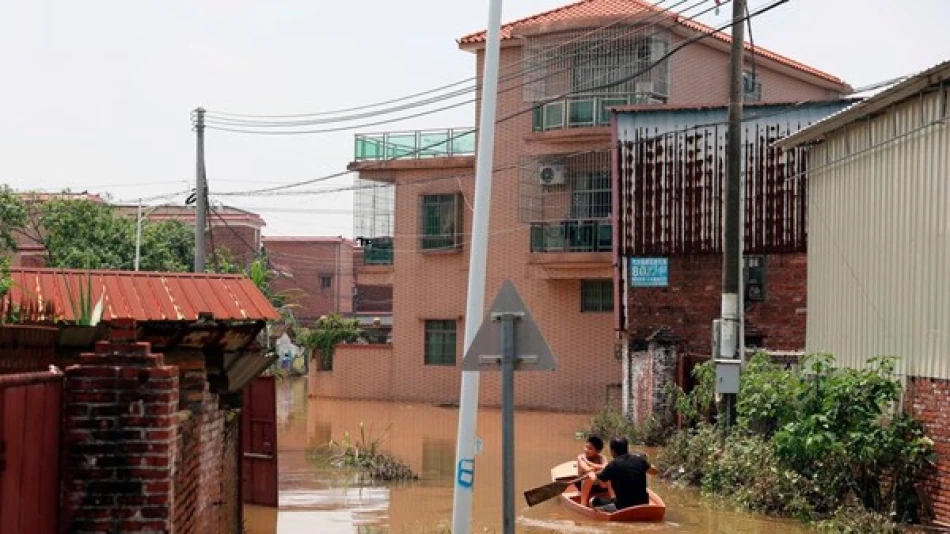
Deadly Floods Devastate Northwest China: Lives Lost as Torrential Rains Submerge Regions
Deadly Floods in Northwest China Expose Growing Climate Vulnerability as Death Toll Rises to 10
At least 10 people have died and 33 remain missing after devastating floods struck China's northwestern Gansu Province, highlighting the country's increasing susceptibility to extreme weather events. The disaster, triggered by relentless rainfall that began Thursday evening, has forced authorities to evacuate 10,000 residents and issue the highest-level landslide warnings.
Unprecedented Rainfall Overwhelms Yuchong County
Yuchong County in Gansu Province bore the brunt of the flooding after receiving up to 220 millimeters of rainfall by Friday midday—a significant deluge for this typically arid region of northwestern China. The continuous downpour, which began Thursday evening, quickly overwhelmed local drainage systems and natural waterways.
Eight townships have been severely affected, with floodwaters damaging critical infrastructure including roads and power supply networks. The scale of destruction has prompted a massive emergency response, with thousands of residents relocated to safer areas.
China's Growing Battle with Extreme Weather
This latest disaster underscores China's mounting challenges with climate-related emergencies. The country has experienced increasingly frequent and severe weather events in recent years, from devastating floods in central provinces to extreme heat waves in the south and unprecedented droughts in the southwest.
Regional Climate Patterns Shifting
Gansu Province, traditionally characterized by its arid and semi-arid climate, has seen unusual precipitation patterns in recent years. The region's location along the Tibetan Plateau's northeastern edge makes it particularly vulnerable to shifting monsoon patterns and atmospheric river events that can dump enormous amounts of water in short periods.
The intensity of Friday's rainfall—220mm in less than 24 hours—represents a significant meteorological event for an area that typically receives only 300-400mm annually. Such concentrated precipitation events are becoming more common across China as global climate patterns intensify.
Economic and Infrastructure Implications
The flooding's impact on infrastructure highlights broader concerns about China's preparedness for extreme weather events, particularly in less developed western regions. Gansu Province, one of China's poorest, faces significant challenges in building climate-resilient infrastructure.
Investment in Disaster Preparedness
The Chinese government has dramatically increased investment in flood control and early warning systems following major disasters in recent years. The successful evacuation of 10,000 people demonstrates improved emergency response capabilities, though the death toll indicates ongoing vulnerabilities.
The highest-level landslide warning issued by authorities reflects sophisticated monitoring systems that have been expanded across China's mountainous regions. These systems, combining satellite imagery with ground-based sensors, represent billions of yuan in infrastructure investment aimed at reducing disaster casualties.
Broader Regional Context
China's struggle with extreme weather mirrors challenges faced across Asia, where rapid development has often occurred in flood-prone areas. Unlike more developed nations that have had decades to build comprehensive flood management systems, China must simultaneously pursue economic development while adapting to changing climate conditions.
The Gansu floods occur as China faces multiple weather-related challenges nationwide, from typhoons along the eastern coast to droughts affecting agricultural regions. This multi-front battle against extreme weather represents one of the most significant domestic challenges facing Chinese leadership as they balance economic growth with environmental resilience.
Most Viewed News

 Layla Al Mansoori
Layla Al Mansoori






